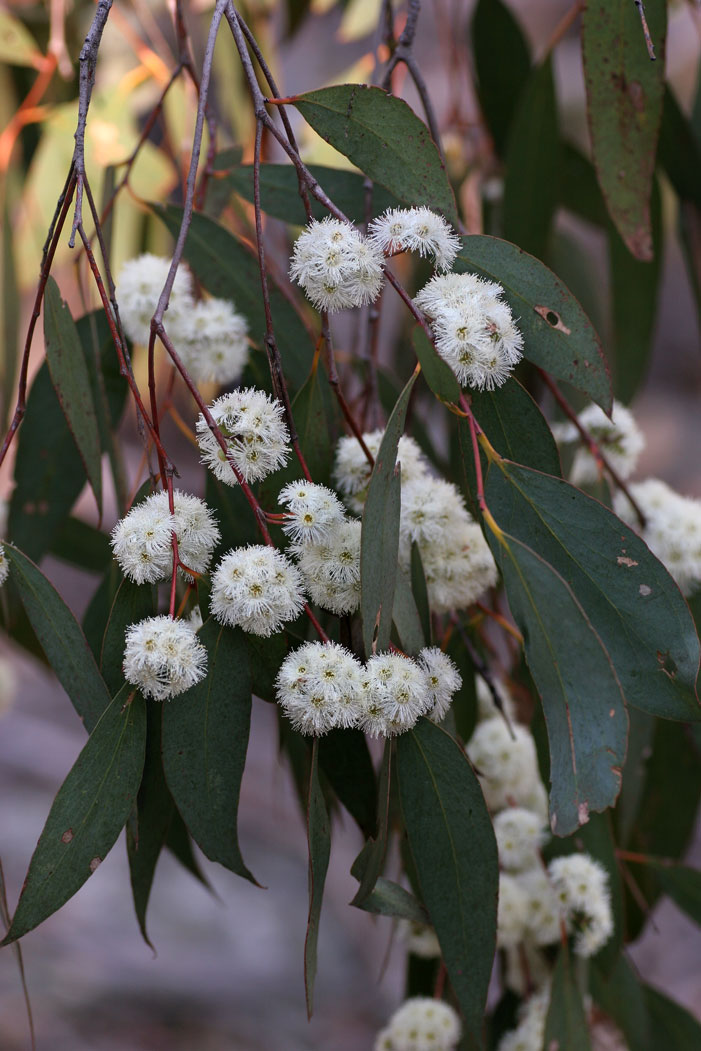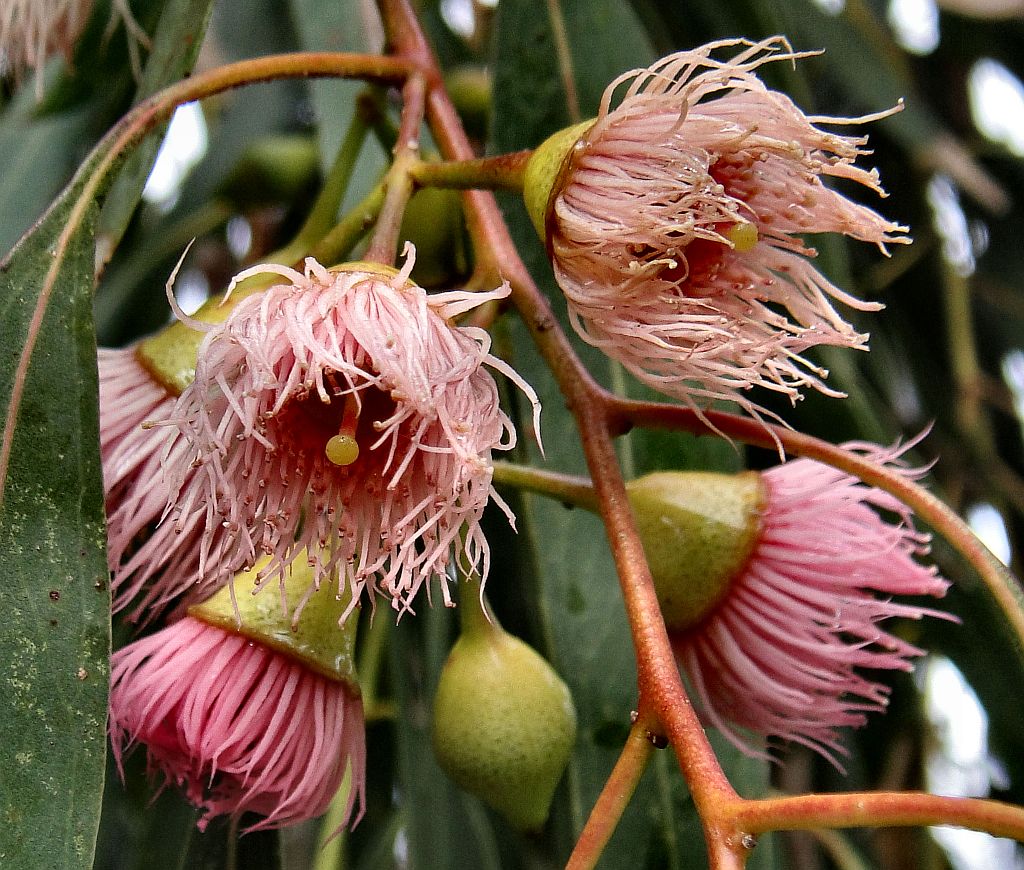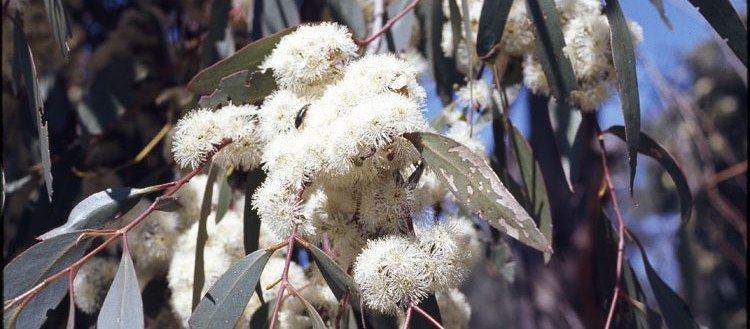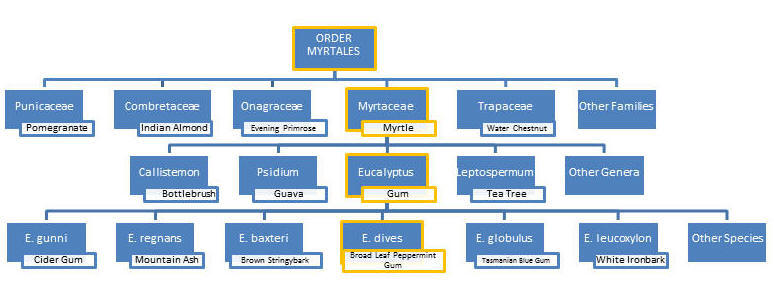Classification
 Domain: Eukarya.
Organisms whose cells contain a true nucleus and
membrane-bound organelles.
Domain: Eukarya.
Organisms whose cells contain a true nucleus and
membrane-bound organelles.
Kingdom: Plantae.
Plants.
Subkingdom:
Tracheobionta. Vascular
plants.
Superdivision:
Spermatophyta. Seed
plants.
Division/Phylum:
Magnoliophyta/Anthophyta.
Angiosperms, or flowering plants.
Class:
Magnoliopsida.
Dicotyledons, or plants whose seedlings have two seed leaves.
Order: Myrtales.
Plants whose wood is characterized by more than one layer of
phloem tissue around the
xylem, along with phloem tissue within the
xylem layers, which is uncommon in most angiosperms.

Family: Myrtaceae.
Myrtle family, composed of 131 genera of woody species native
to either Australia or tropical America that also possess oil
glands.
Genus:
Eucalyptus L’Herit.
Evergreen plants of diverse sizes native to East Malaysia and
Australia.
Species:
Eucalyptus dives Schauer.
Broad-leaf peppermint gum.
Figure 1: Phylogenetic tree for Eucalyptus dives from Order to Species level. Evidence for these classifications is derived from a variety of sources.
Figure 2: Phylogenetic tree for Myrtales from Kingdom to Order level, showing several other orders also within the Subclass Rosidae. Take a look at the salmonberry, medical marijuana, American raspberry, and almond plants, from the Order Rosales. Evidence is based on fossil records and other sources.


